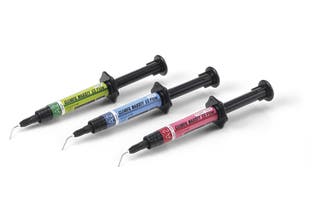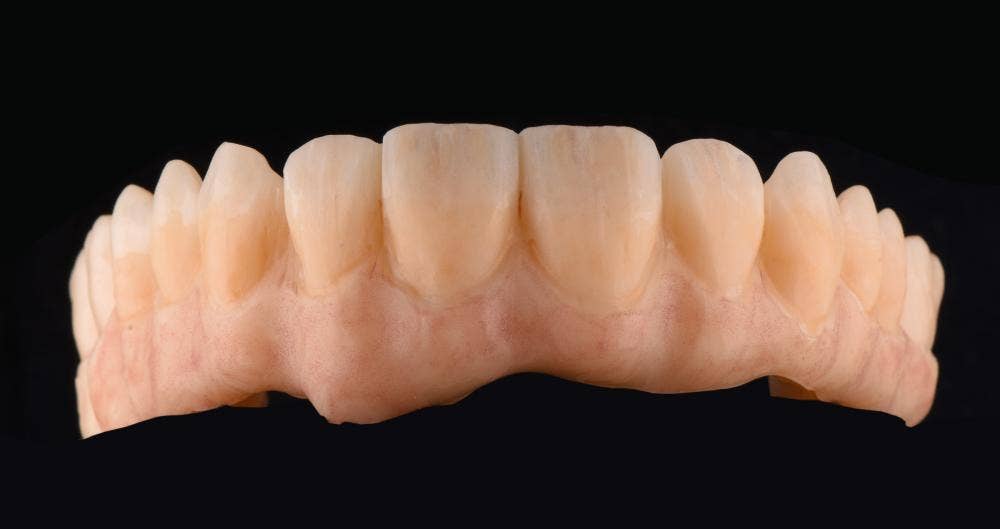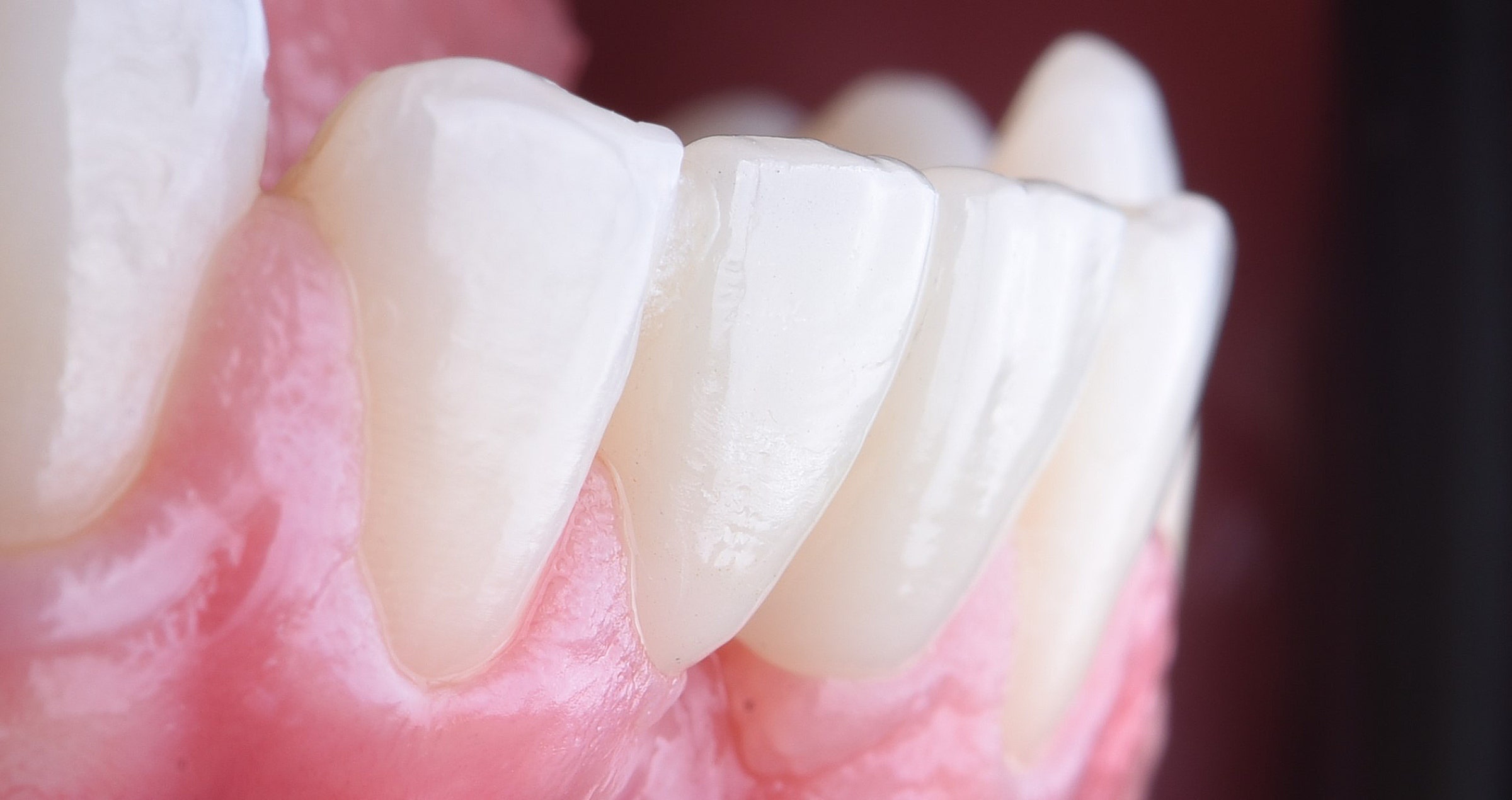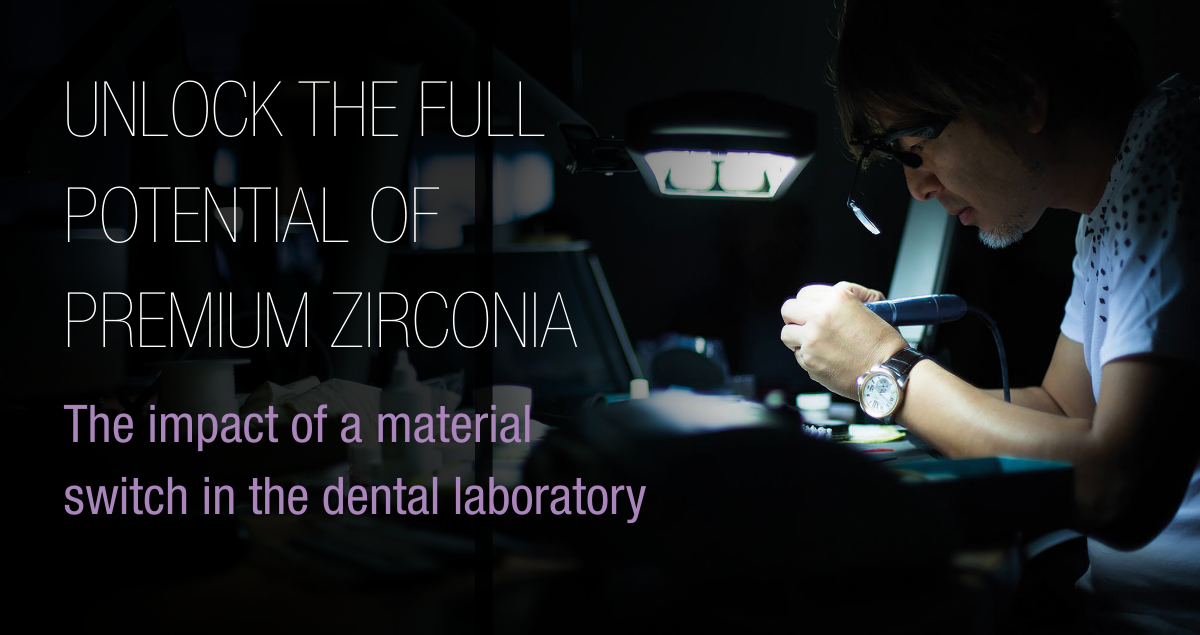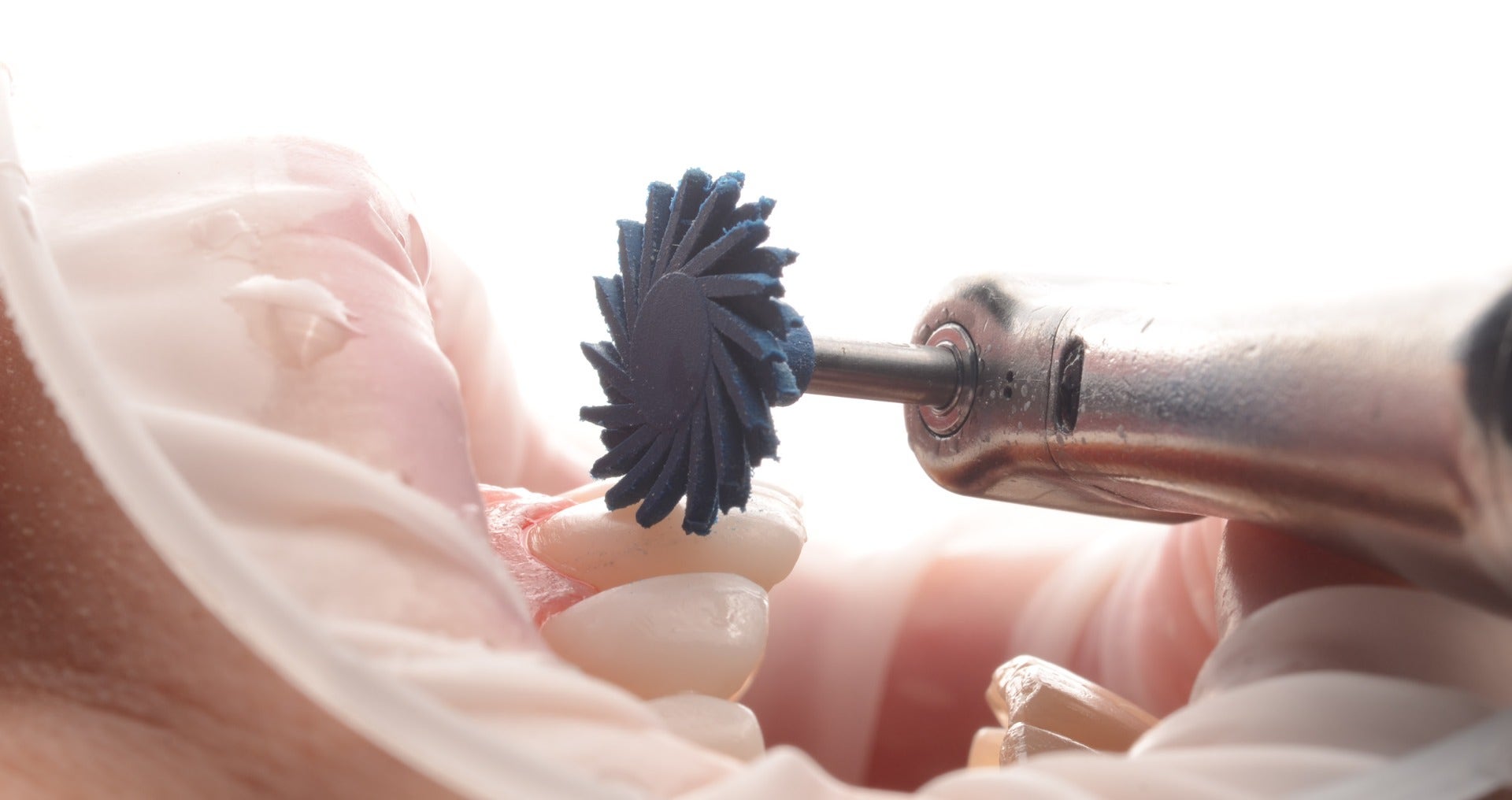
Flowable Injection Technique: how to polish composite restorations?
By Dr. Michał Jaczewski
The durability of a composite restoration depends on many factors. Some are outside the practitioner's sphere of influence and are strongly patient-related. For example toothbrush and toothpaste type, brushing technique, diet, stimulants and hygiene habits all have an impact on the restoration. Following the best finishing and polishing protocol, however, is fully up to the dentist.
Correct polishing aims to remove the oxygen inhibition layer and produce a smooth restoration surface. A properly polished restoration will not absorb staining agents from food, drink or stimulants that lead to discoloration of the composite, ensuring a long-lasting aesthetic result of the restoration.
Polishing the composite is a process to which special attention should be paid. It consists of several steps and principles:
- The use of finishing discs allows for a smooth restoration surface , excess composite to be removed and the final shape to be given to the restoration. It is important to remember to work on a moistened surface with a maximum speed of 5,000-10,000 rpm on a 1:1 dental handpiece.
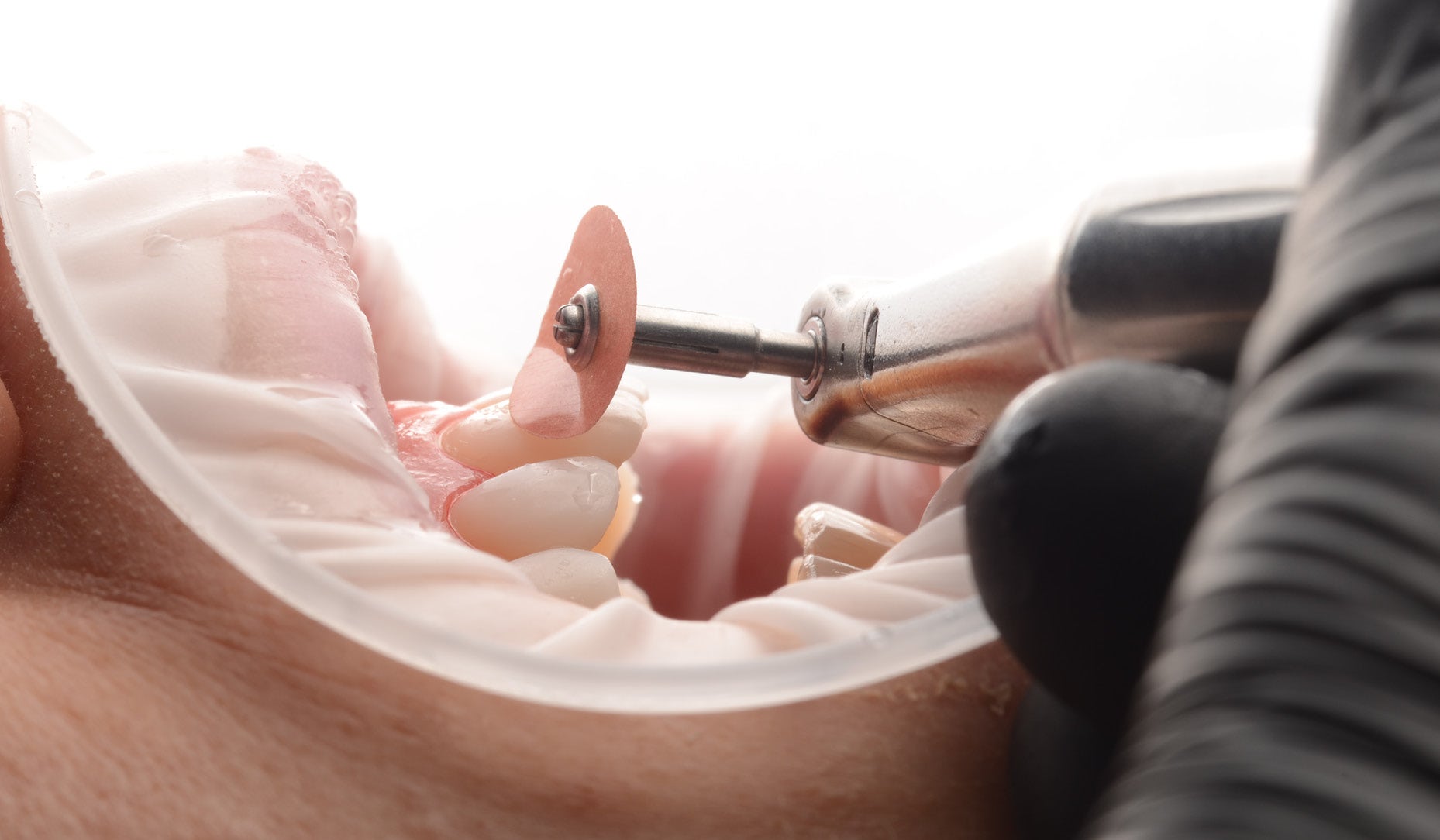
- Polishing rubbers, there are many types and shapes on the market. One of the most universal designed specifically for composite is TWIST™ DIA for Composite. This is a set consisting of two rubbers with different levels of abrasion. The first (dark blue) is used for preliminary rough polishing, the second (light-blue) for final gloss and smoothness. It should be remembered that working with these tools should be carried out on a dry surface without water cooling. Dry working carries the risk of irritating the dental pulp, so the working speed should be limited to between 5000 and 10000 rpm and excessive pressure must be avoided.

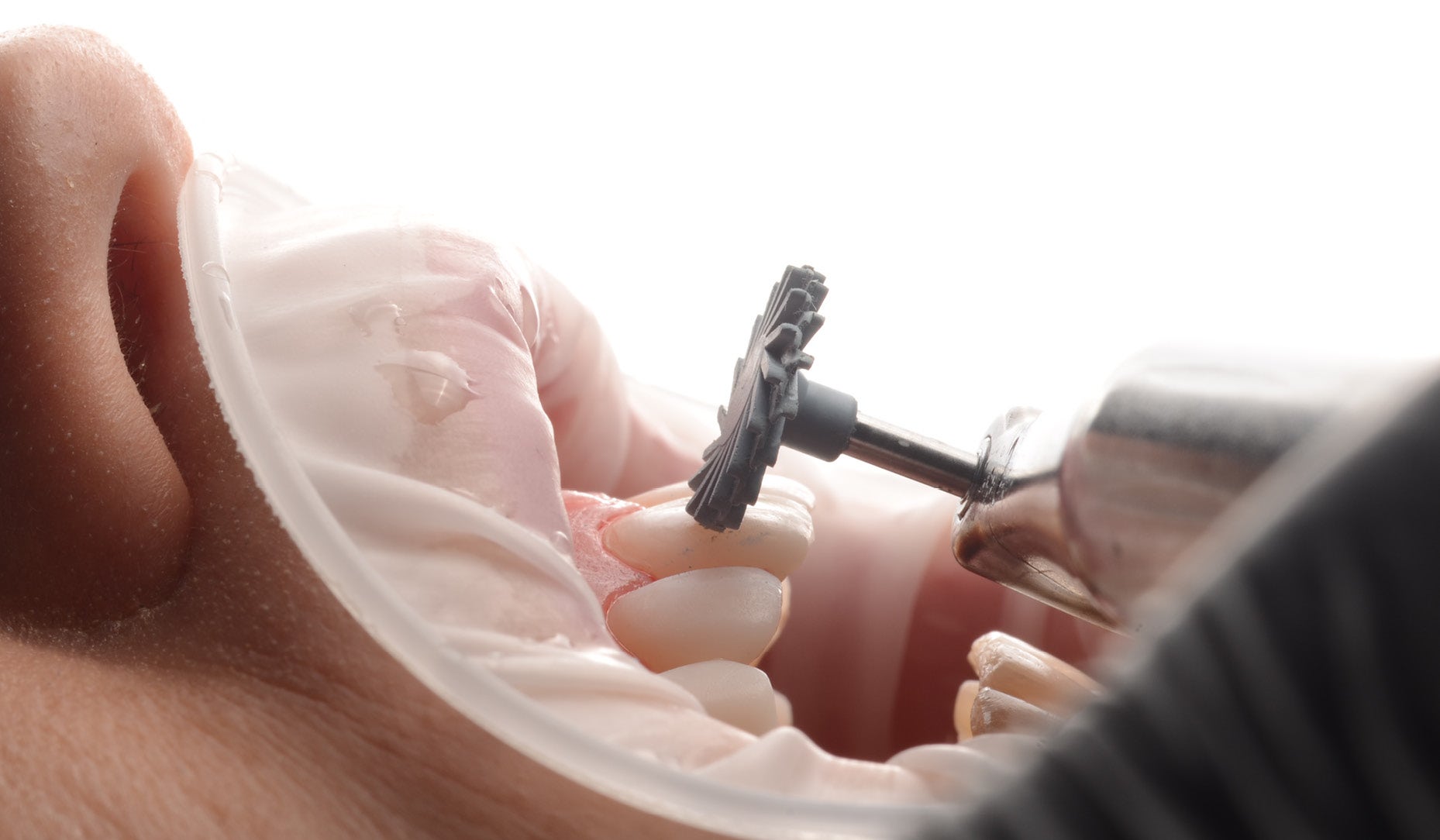
- The next step is to use a diamond polishing paste with a gradient of 1 to 5 microns. The use of a polishing goat wheel brush is recommended to use with this paste. The type of brush is not important, however, don’t use rigid bristles that could scratch the composite. Using the polishing brush and polishing paste make it possible to reach places which are difficult to access, such as the cervical area and proximal surfaces. In addition to this step, a celluloid diamond containing abrasive strip is used to polish the proximal surfaces more precisely. In order not to alter the contact points, low abrasive (Super Fine) strips should be used.

- A further step to increase the gloss of the restoration and to protect it against discoloration is an aluminum oxide paste with a cotton polishing brush. The use of such paste, originally dedicated to ceramics, results in an exceptionally smooth surface and a high gloss of the restoration surface. This step is carried out in a dry environment at a maximum speed of 5,000-10,000 rpm.

In all techniques, thus also the Flowable Injection Technique, the level of polishing influences the durability and the optical and aesthetic properties of the restoration. This key step in tooth restoration should therefore devoted sufficient time. Composites are characterized by different compositions and amounts of fillers which not only influence their properties, but also the ease with which they can be polished. In some cases, the procedure has to be repeated several times to achieve a "mirror effect". CLEARFIL MAJESTY™ ES Flow is a composite which is very easy to polish to a high shine level, despite its high filler content. Specially adapted rubbers, brushers and pastes enable easy creation of a smooth surface thereby contributing to a lasting result.

BEFORE

AFTER

3-YEARS RECALL
MAKE THEM SHINE, MAKE THEM SMILE!
Would you like to know more about Flowable Injection Technique? Read the insightful and inspirational interview with Dr. Michał Jaczewski.
Dentist:

MICHAL JACZEWSKI
Michał Jaczewski graduated from Wroclaw Medical University in 2006 and today runs his private practice in the city of Legnica, Poland. He specializes in minimally invasive dentistry and digital dentistry and is the founder of the Biofunctional School of Occlusion. Here he lectures and runs workshops with focus on full comprehensive patient treatments.
- 12 mars 2024
